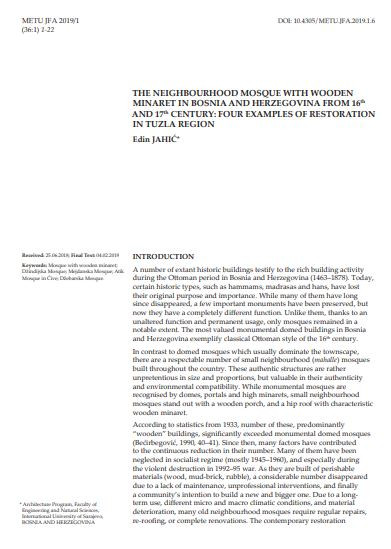
A number of extant historic buildings testify to the rich building activity
during the Ottoman period in Bosnia and Herzegovina (1463–1878). Today,
certain historic types, such as hammams, madrasas and hans, have lost
their original purpose and importance. While many of them have long
since disappeared, a few important monuments have been preserved, but
now they have a completely different function. Unlike them, thanks to an
unaltered function and permanent usage, only mosques remained in a
notable extent. The most valued monumental domed buildings in Bosnia
and Herzegovina exemplify classical Ottoman style of the 16th century.
In contrast to domed mosques which usually dominate the townscape,
there are a respectable number of small neighbourhood (mahalle) mosques
built throughout the country. These authentic structures are rather
unpretentious in size and proportions, but valuable in their authenticity
and environmental compatibility. While monumental mosques are
recognised by domes, portals and high minarets, small neighbourhood
mosques stand out with a wooden porch, and a hip roof with characteristic
wooden minaret.
I agree to the terms outlined below:
You agree to upload and assign Mosqpedia Database the rights to use the content worldwide and in perpetuity across all current and future media platforms. Mosqpedia Database may edit, copy, adapt and translate your contribution.
The content will be distributed under the Creative Commons Attribution-Deed – Attribution-NonCommercial-NoDerivatives 4.0 International – Creative Commons
All data will be stored in line with data protection regulations.